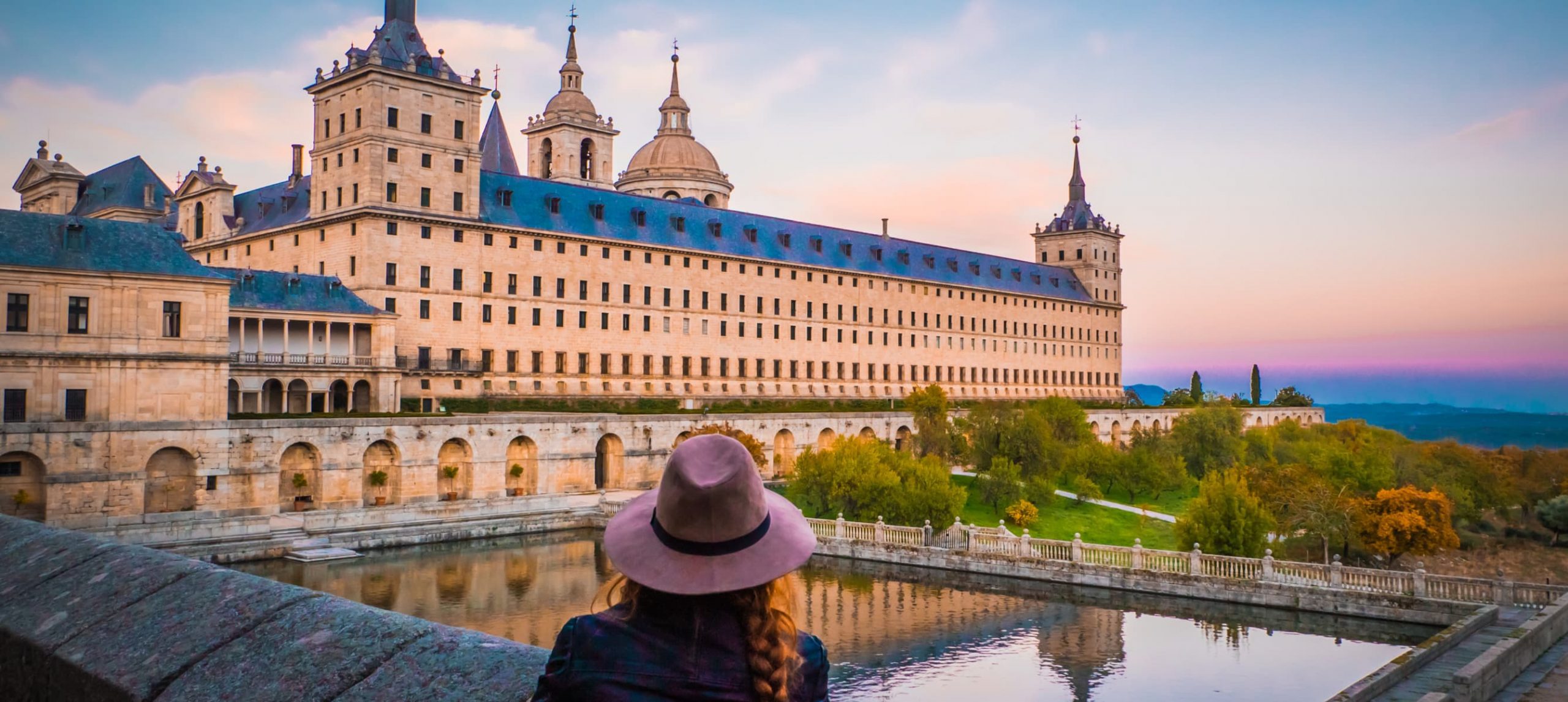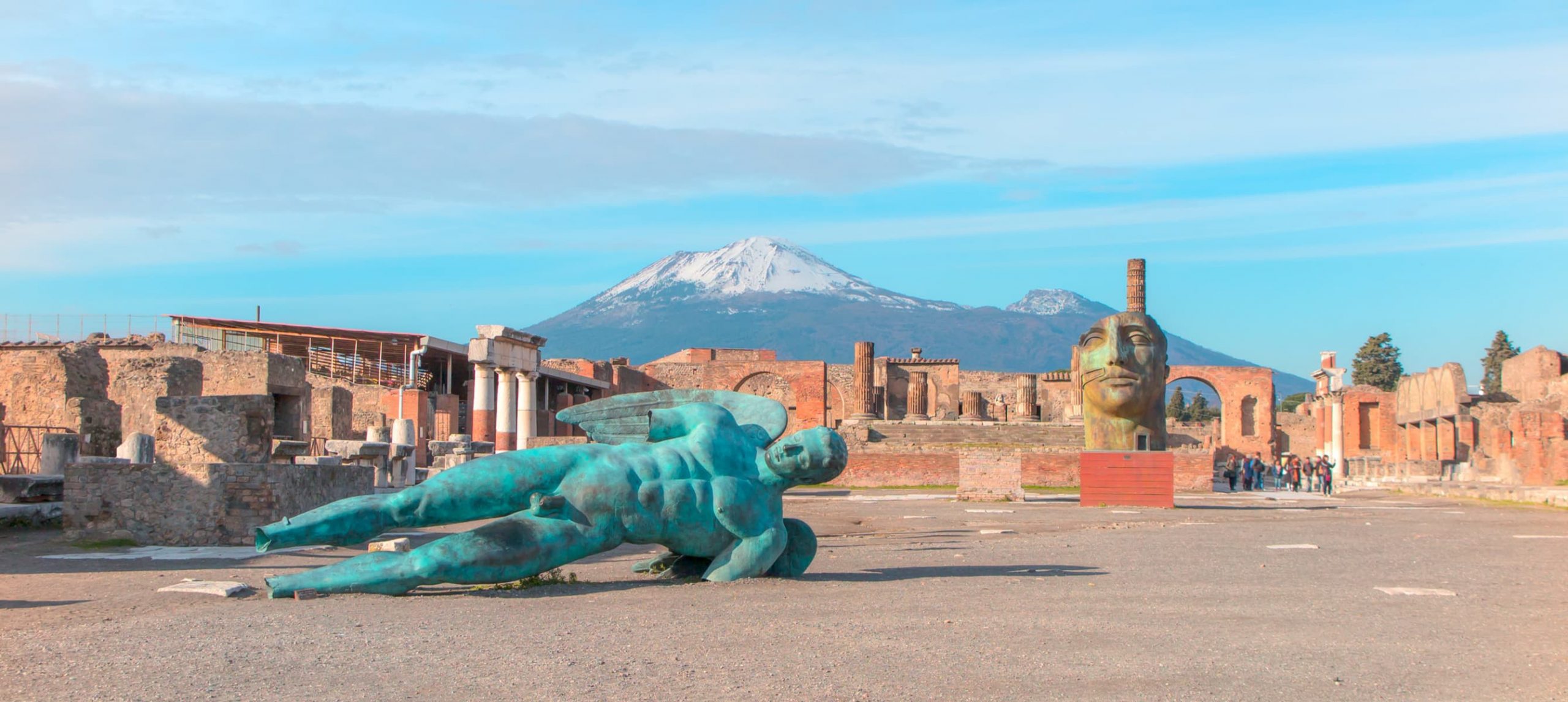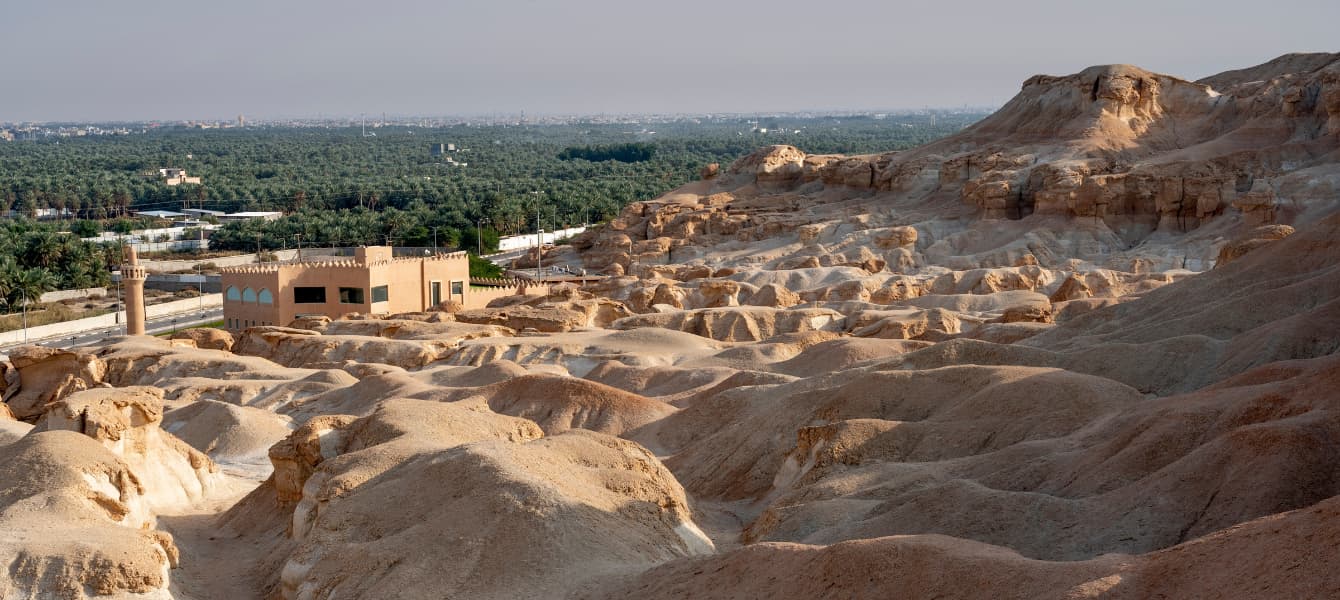While you’re in Madrid there are many activities to keep you entertained. The Spanish capital has a lot to offer, not only when it comes to attractions and gastronomic experiences, but also offers travelers the opportunity to enjoy a variety of amazing day trips. You can explore several places using the AVE high-speed train, and discover what those remote, and fascinating nearby towns have to offer.
Want to experience Madrid way beyond Plaza Mayor? Then read on to discover the best destinations that are located within a short hop from the city. Get ready to experience history, palaces, UNESCO World Heritage, and more!
The 8 Best Day Trips from Madrid
The Royal Palace of Aranjuez
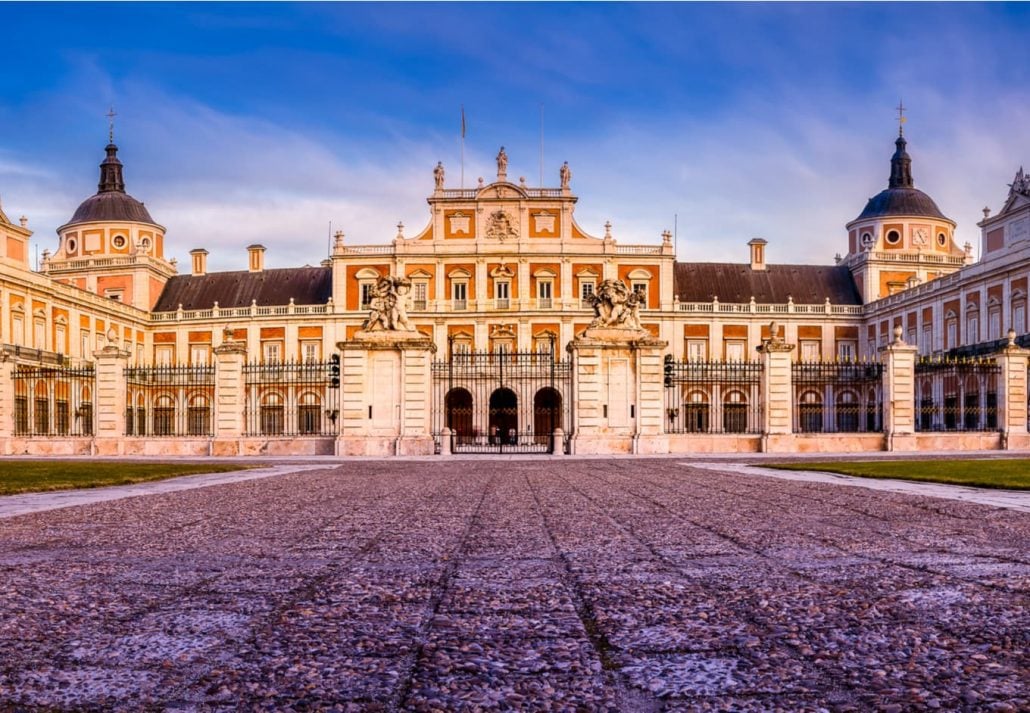
The Royal Palace of Aranjuez is a former house of the Spanish Royal Family and is located in Aranjuez, a town 50 km (31 miles) south of Madrid. The town became one of the Royal Estates of the Crown of Spain in 1560, during the reign of Philip II. Until 1752, only the royalty and nobility were allowed to dwell in the town.
The Royal Site is filled with history and beauty, which is part of the Aranjuez Cultural Landscape, declared a World Heritage Site by UNESCO. It is surrounded by a total of 111.23 hectares of visitable gardens and is located on a fertile plain where the Tajo and Jarama rivers converge.
The building is characteristic of Hapsburg classicism with alternating white stone and brick. The palace only remained for twenty years in the regular form conceived by John the Baptist of Toledo, and which had taken two centuries to be completed.
Enjoy the decoration of the Official Halls that form part of the public visit, which is mainly from the Bourbon age, and amongst these spaces, discover the Queen’s Dressing Room, the Ballroom, and the Gala Dining Room. There are also exotic and surprising spaces like the Arabic Room, the Porcelain Room, and the Chinese Room, decorated with 200 paintings given to Isabella II in 1846 by the Emperor of China.
While you’re there, also visit The King’s Garden, The Island Garden, The Parterre, and The Prince’s Garden, which surround the Palace and are just as beautiful.
Monastery of San Lorenzo de El Escorial
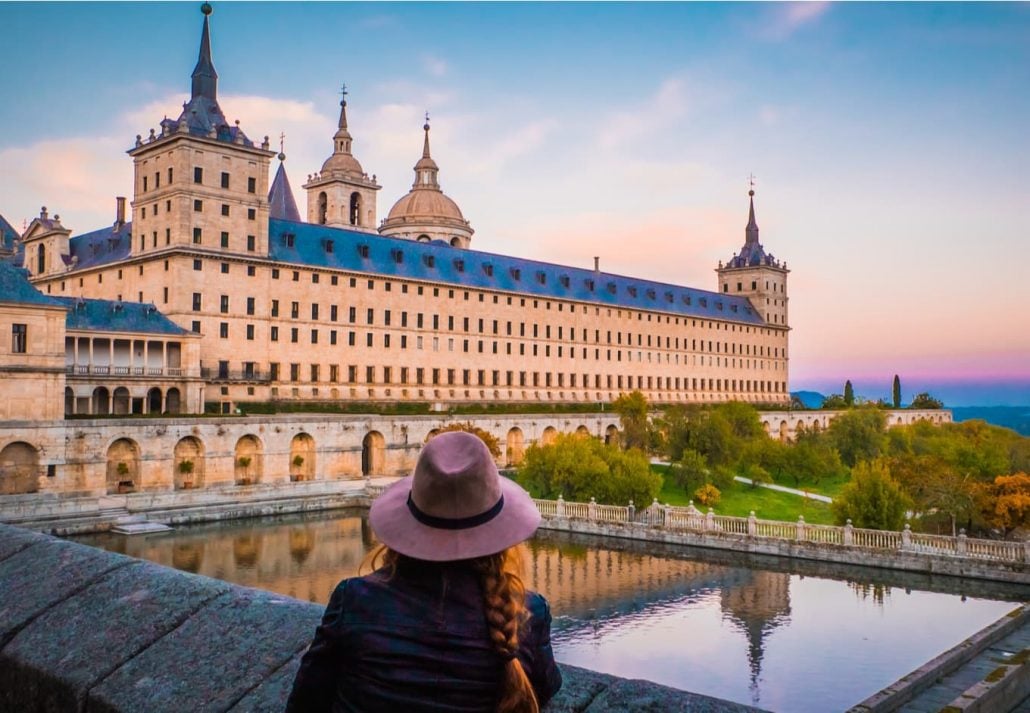
Located in the heart of the Guadarrama Sierra (on one side of Mount Abantos), just 50 km (31 miles) from Madrid, San Lorenzo de El Escorial is one of the municipalities of the greatest tourist and cultural interest in the region. Its main attraction is the San Lorenzo de El Escorial Monastery and Royal Site, which was declared to be a UNESCO Heritage Site in 1984.
The Monastery of El Escorial is the monument that best sums up the ideological and cultural aspirations of the Spanish “Golden Age”, expressed here through an original synthesis of Italian and Flemish artistic forms at the behest of Philip II.
Combining several functions in one building, San Lorenzo el Real was born as a monastery of the monks of the order of San Jerónimo, whose church served as a royal pantheon. It also has a palace to house the king and his entourage, a school and seminary to complete the religious function of the monastery, and a library. This scheme is, to a certain extent, still in place today.
The building complex, severe in its lines, has four principal stories with large towers at each corner. Arranged within a quadrangle, the buildings include the church (1582); the monastery, royal palace, and college (1584); and the library (1592).
The interior of the Escorial was decorated by many notable Spanish and Italian artists of the 16th and 17th centuries. Pellegrino Tibaldi and Federico Zuccaro were among the earliest painters to execute frescoes there. Other masters who painted works for the Escorial were El Greco, Luca Giordano, and Claudio Coello.
So don’t hesitate to visit this amazing monastery full of Renaissance history, gardens, chapels, and town squares.
Casa de las Conchas in Salamanca
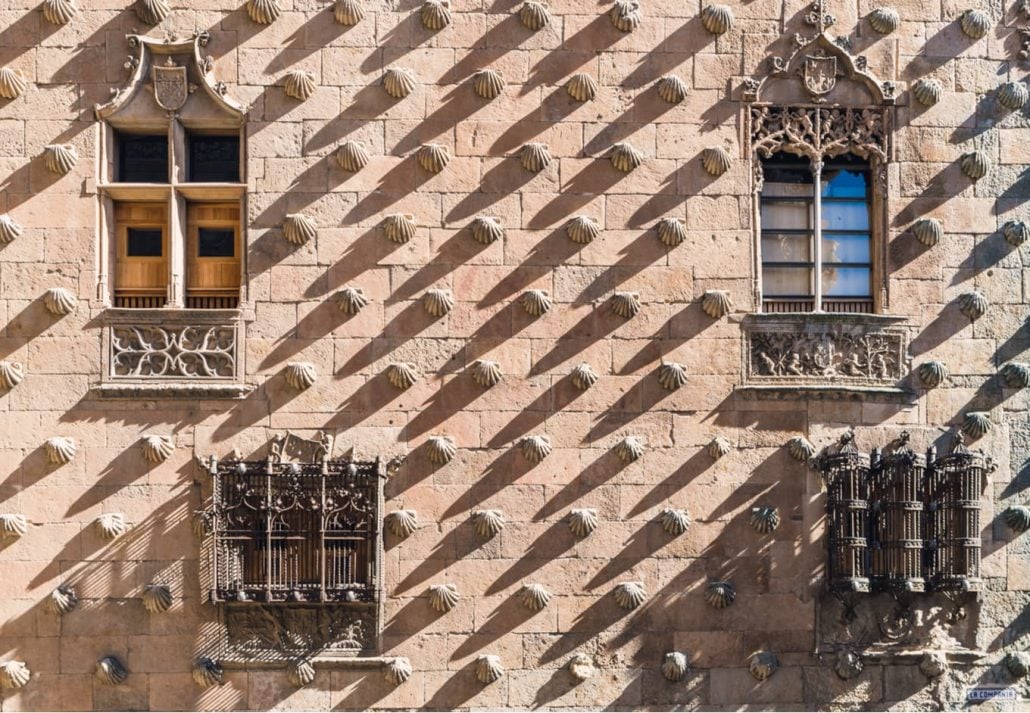
The Casa de las Conchas (the House of Shells) is a Gothic-style building in Salamanca, 2 hours from Madrid.
The city is worth visiting in on itself, famous for its university town (it attracts thousands of international students every year), and its beautiful streets and architecture. The Old Town has also been declared a UNESCO World Heritage Site since 1988.
The House of Shells is one of those places you have to visit: constructed in the late 15th century, this civil building will attract your attention due to the over three hundred shells that cover its outer walls. In the 18th century, it suffered cracks, causing the upper part to be remodeled leaving it without the shells that decorate the rest of the façade, but it’s still one of the most striking buildings in the city.
One notable feature is the entrance door with a Gothic coat of arms featuring a fleur-de-lis on the upper part.
Today the building houses the Salamanca public library.
Toledo Cathedral
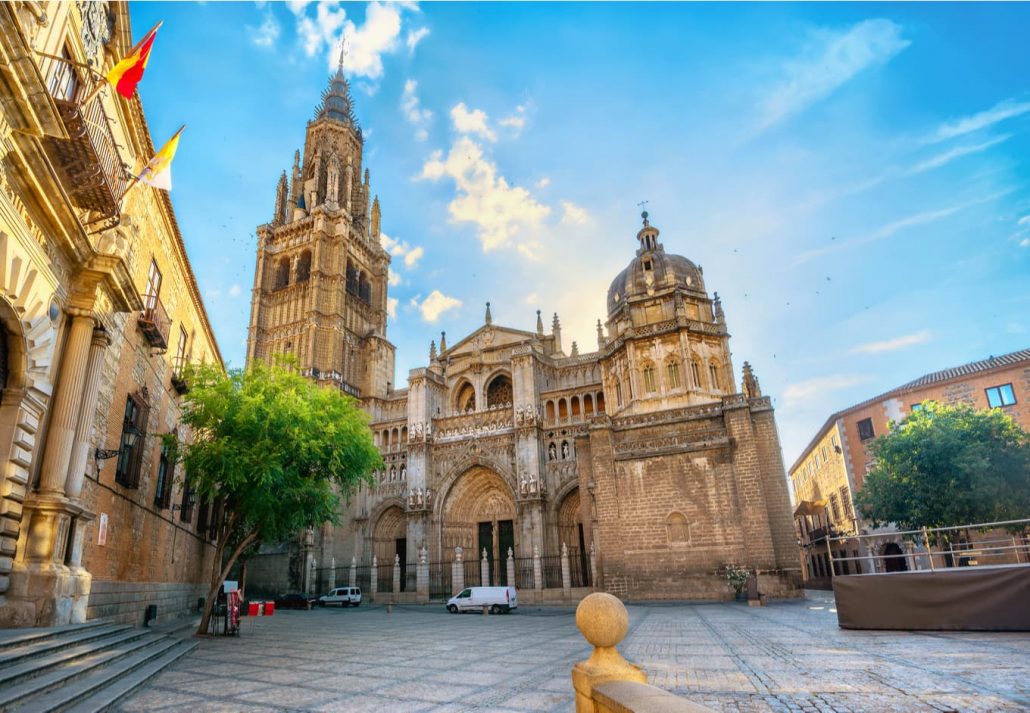
The historic city of Toledo is only 59 km (36 miles) from Madrid and it’s also been declared a UNESCO World Heritage Site since 1986 due to its extensive monumental and cultural heritage.
You can do so much in the city; not only you can stroll through its beautiful and historical streets, but its Gothic Cathedral will leave you breathless.
It’s one of the three 13th-century High Gothic cathedrals in Spain and is considered, in the opinion of some, to be the magnum opus of the Gothic style in Spain. The temple was actually built on top of a Muslim mosque, and before that, it had been a church in the sixth century during the reign of the Visigoth King Recaredo.
Besides its historical and artistic value, this Cathedral has a theological meaning as a reference for the pastoral life of the diocese priests and loyal laypersons. Cathedrals have been a place where the occidental and European culture has been forged and where the beginnings of universities were created. They furthered social reform and were art workshops. Today, cathedrals are a witness of that culture and a message of significance and values for everyone.
Aqueduct of Segovia
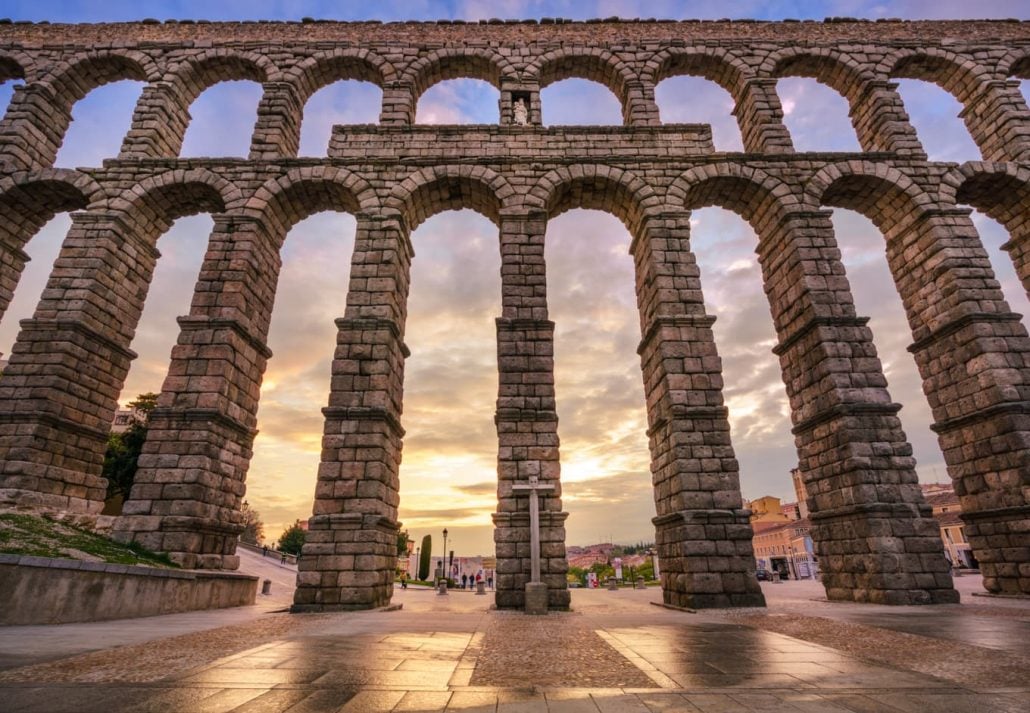
Segovia is located within 1 hour and 30 mins from Madrid, and it’s famous for its historic buildings. Its three main landmarks are its midtown Roman aqueduct, its cathedral (one of the last ones to be built in Europe following a Gothic style), and the castle, which served as one of the templates for Walt Disney’s Cinderella Castle. The city center was declared World Heritage by UNESCO in 1985.
The aqueduct is 15 km long and thought to have been built during the Flavian dynasty, from the second half of the first century to the early 2nd century CE under the Emperors Vespasian and Trajan in order to carry the water of the River Acebeda to the city.
This impressive work of engineering, still in excellent condition, begins near the Palace of La Granja, with single arches bringing the water to the tank known as El Caserón. Then, a stonework channel carries it to a second tower, and when it arrives at Plaza de Díaz Sanz, it begins to form two monumental rows of arches, one on top of the other. There is no mortar or cement between the 20,400 blocks of stone, which remain standing solidly in a perfect balance of forces. The highest point of the construction is on Plaza del Azoguejo, where it is 28.10 m high, with a total of 167 arches.
Hanging Houses of Cuenca
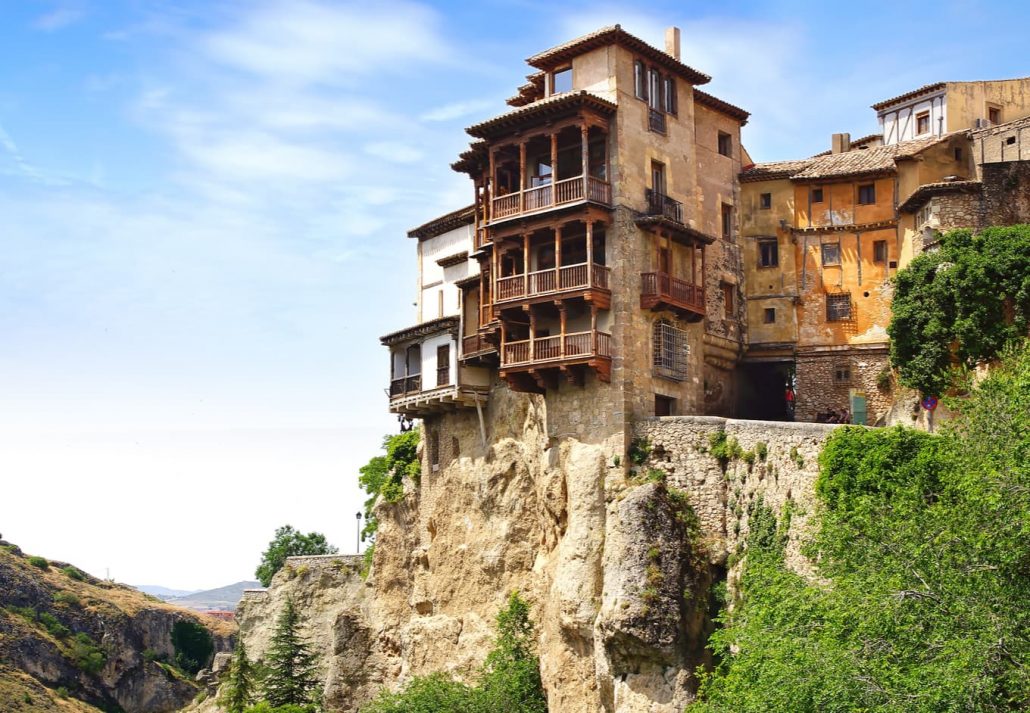
Cuenca is almost two hours from Madrid but the day trip’s worth it just to see its Hanging Houses.
The Casas Colgadas (Hung Houses) is a complex of houses, that, in the past, were frequent along the eastern border of the ancient city, located near the ravine of the river Huécar. Today, however, there are only a few of them remaining, but no less impressive. Of all of these structures, the most well-known is a group of three with wooden balconies.
Their origin remains uncertain, though there is proof of their existence in the 15th century. Throughout their history, they have been refurbished several times, and they’re the perfect backdrop for beautiful photos!
They have been used as individual homes, council houses, and in the past hosted a mesón, a type of restaurant, and the Museo de Arte Abstracto Español (Spanish Abstract Art Museum), in Cuenca.
Cervantes Birthplace Museum in Alcalá de Henares
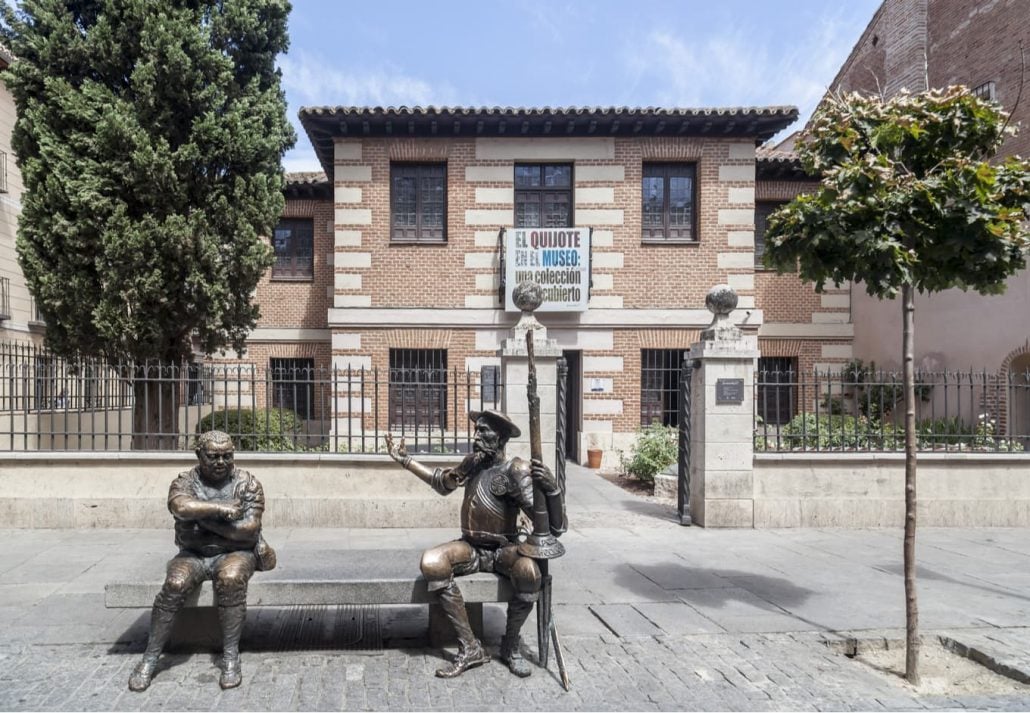
In the Community of Madrid, Alcalá de Henares straddles the Henares River, which is located 35 km (22 miles) to the northeast of the center of Madrid. As of 2018, it has a population of 193,751, making it the region’s third-most populated municipality. Its historical center is one of UNESCO’s World Heritage Sites. It is also the native city of Miguel de Cervantes.
But if you decide to visit the city, you should definitely go to the Cervantes Birthplace House Museum. You’ll be able to see where the author of the timeless novel ‘Don Quixote’ was born and spent his childhood.
The period atmosphere of the house’s interior takes visitors back in time to the 16th and 17th centuries. The lower floor was the scene for the family’s day-to-day life and was divided into a workroom, kitchen, dining room, ladies’ room, and the surgeon’s office –the profession of Cervantes’ father. The upper floor was occupied by sitting rooms and bedrooms. It now houses an important collection of furniture, ceramics, etchings, and paintings from the period, as well as an important library collection.
Sierra de Guadarrama Mountains
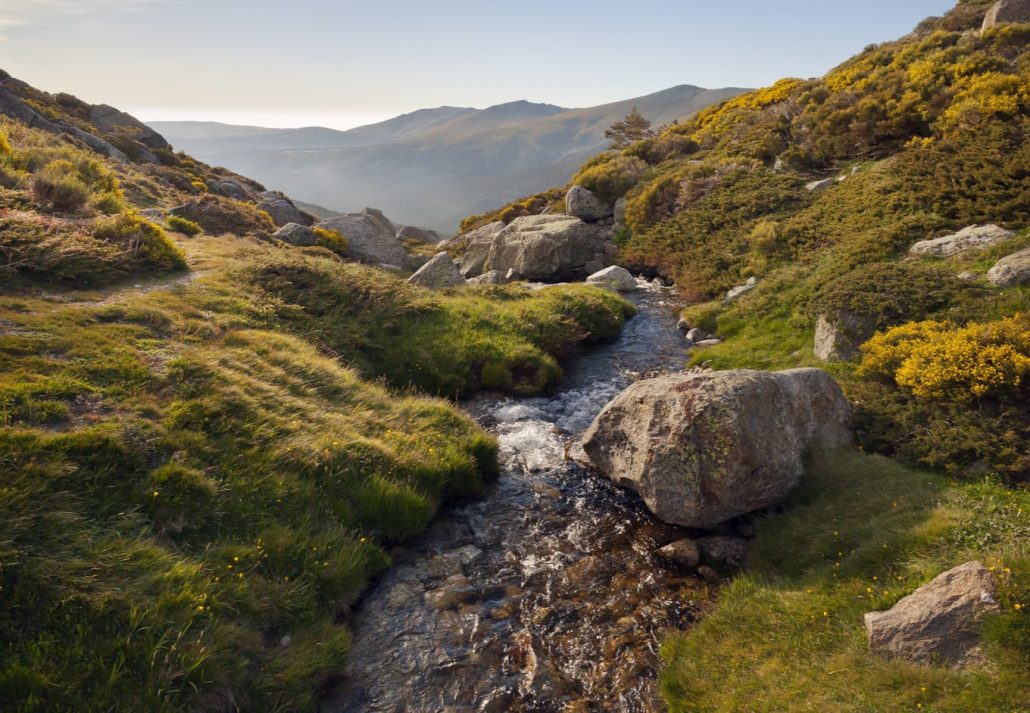
70 km (44 miles) ride from Madrid, the Sierra de Guadarrama Mountains are one of the tourists’ favorite spots for a day trip. It’s a mountain range forming the main eastern section of Sistema Central, the system of mountain ranges along the center of the Iberian Peninsula. It is located between the systems Sierra de Gredos in the province of Ávila, and Sierra de Ayllón in the province of Guadalajara.
More than 2,000 meters high, vast forests and varied wildlife are all waiting for you at the Sierra de Guadarrama National Park. The park offers the chance to discover some of the best examples of Iberian nature, only one hour by car from the city of Madrid.
The mountain range’s proximity to Madrid means it can get crowded with visitors. The range is crossed by numerous roads and railway routes. It has a highly developed tourism infrastructure, coupled with provisions for various mountain sports. This poses a threat to the fragile environment and habitats of the mountains.
There you can go skiing, hiking, wildlife spotting, or if you feel like going for a swim you can visit Las Presillas natural swimming pool in Rascafria, which is a popular spot with day-trippers from Madrid during the summer (there’s plenty of green space around the pool for a picnic), while Cercedilla’s natural pool, Las Berceas, is the closest to Madrid (reachable by commuter train and bus).
FAQs
What is a popular day trip near Madrid?
The best day trips from Madrid, Spain:
- The Royal Palace of Aranjuez;
- Monastery of San Lorenzo de El Escorial;
- Casa de las Conchas in Salamanca;
- Toledo Cathedral;
- Aqueduct of Segovia;
- Hanging Houses of Cuenca;
- Cervantes Birthplace Museum in Alcalá de Henares;
- Sierra de Guadarrama Mountains.
Can you do a day trip from Madrid to Seville?
Yes. There’s a high-speed train from Madrid to Seville that boasts average travel times of 2 hours and 30 minutes.
Is Salamanca a day trip from Madrid?
Yes, and the driving distance between both cities is 2h30.
Is Toledo a day trip from Madrid?
Yes, and the driving distance between both cities is 1h11.
Is there a high-speed train from Madrid to Granada?
Yes. Spain’s high-speed AVE service connects the two cities in less than 3h30.
Can you do a day trip to Barcelona from Madrid?
Yes. The travel duration of the high-speed train from Madrid to Barcelona ranges from 2h30 to 3h10.
How do you get from Madrid to Avila?
There are several ways of going from Madrid to Avila. The cheapest is the bus, whose journey time to Ávila is around 1h 34m.
How do I get from Madrid to Segovia?
The fastest and most convenient way to get to Segovia is via the efficient AVE high-speed train,
Is Segovia worth visiting?
Boasting medieval walls, Romanesque churches, a century-old aqueduct, and a former royal palace, the history-filled Segovia is definitely worth visiting.
Is Madrid, Spain, worth visiting?
Yes. Vibrant and cosmopolitan, Spain’s capital rewards travelers with a dazzling wealth of gastronomic experiences, historical sights, lush urban parks, and world-class art museums.
Is Madrid safe for tourists?
Yes, Madrid is a safe city to visit.
Can you do a day trip from Madrid to Valencia?
Yes. It takes an average of 1h 46m to travel from Madrid to Valencia by train.
Is one day in Valencia enough?
You can explore the city in one day, but 3 days is the recommended amount of time to really experience what Valencia has to offer.
Is Valencia worth visiting?
Yes. Home to several beaches, a futuristic cultural center, and lip-smacking paella restaurants, Valencia is definitely worth a visit.
Is Cuenca, Spain, worth visiting?
Beautifully set in the mountains of east-central Spain, and boasting a rich Moorish heritage, Cuenca is a worth-visiting destination.
CuddlyNest provides all accommodations to all travelers at the best price. Find unlimited travel inspiration on our blog and social media channels.
You Might Also Like:
Spain Travel Apps
Tourist Attractions in Barcelona
Best Cities to visit in Spain
La Tomatina Festival, Spain
Eating Tapas In Granada, Spain
Vegan Restaurants in Alicante, Spain
A Complete Guide To The 15 Best Festivals In Spain
The Best Museums In Madrid, Spain
The 10 Best Spanish Cheese You Should Try
The Ultimate Guide to Lobos Island, Spain
